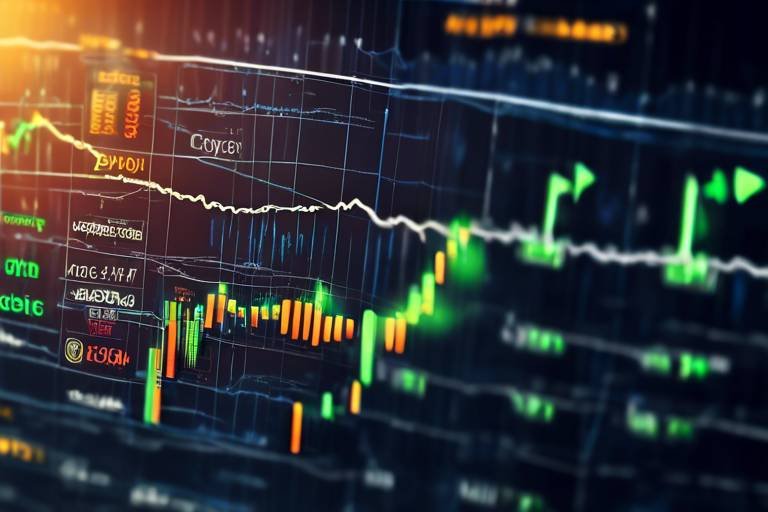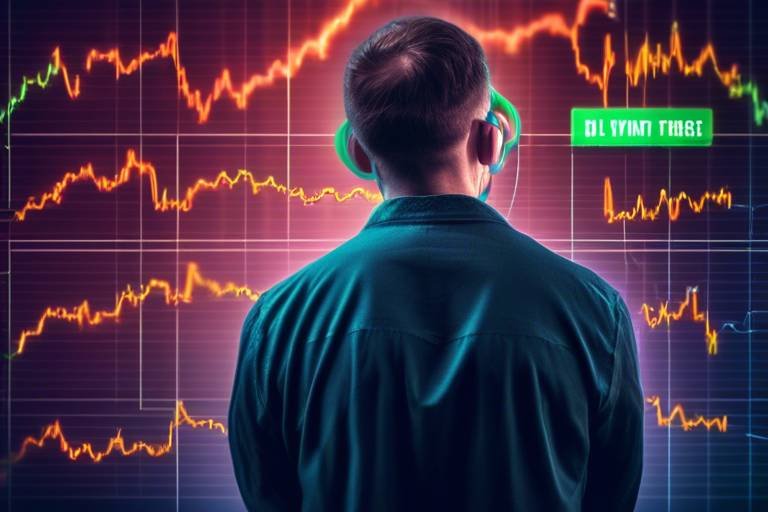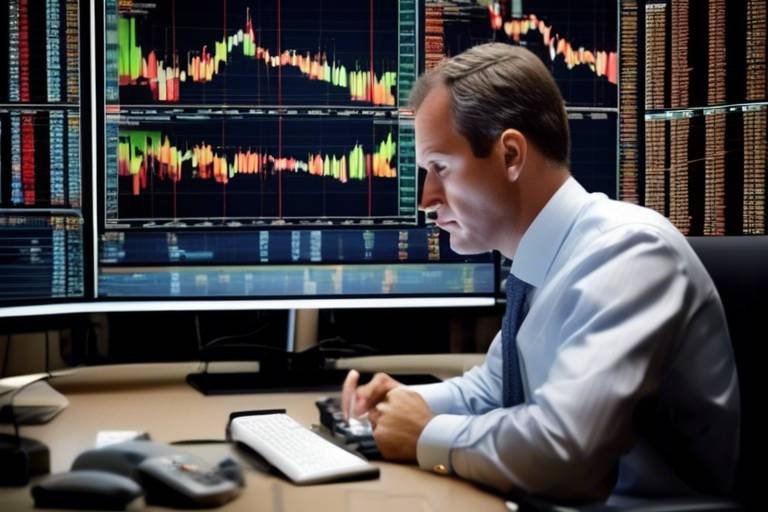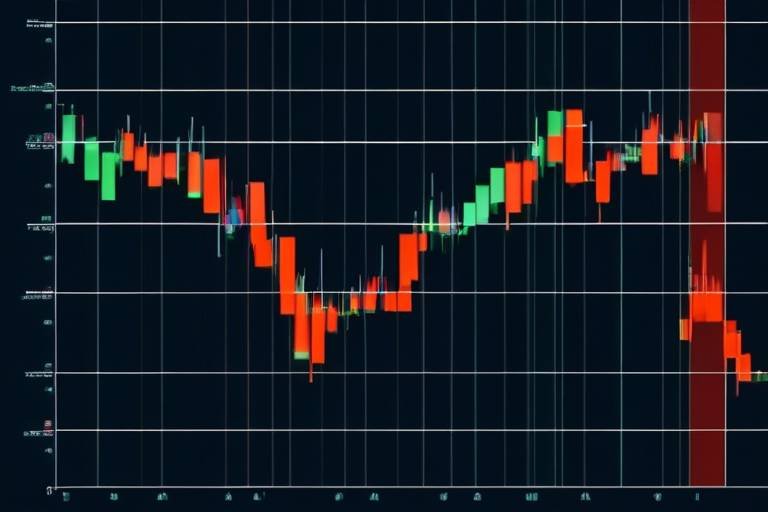The Importance of Continuous Education in Trading
In the fast-paced world of trading, where markets can change with a flick of a switch, continuous education is not just an option; it's a necessity. Imagine trying to navigate a stormy sea without a compass—this is akin to trading without the latest knowledge and skills. As a trader, whether you're a novice or a seasoned pro, staying informed about market trends, economic indicators, and trading strategies can make all the difference. Just as a musician hones their craft through practice and learning, traders must invest time in education to refine their skills and enhance their understanding of the market landscape.
Why is this continuous learning so crucial? Well, the trading environment is constantly evolving. New technologies, regulatory changes, and economic shifts can impact market dynamics overnight. By embracing a culture of ongoing education, traders can not only keep pace but also gain a competitive edge. This article delves into the various aspects of continuous education in trading, exploring how it shapes success, enhances market understanding, and strengthens risk management strategies.
Grasping market dynamics is essential for traders. Continuous education helps in recognizing trends, economic indicators, and the overall market sentiment, which can significantly influence trading decisions. Think of the market as a living organism; it breathes, it grows, and it reacts to external stimuli. By constantly learning, traders become adept at interpreting these signals, allowing them to make informed decisions that align with market movements.
For instance, understanding how interest rates affect currency valuations or how geopolitical events can sway stock prices is vital. By staying updated through courses, webinars, and market analysis, traders can enhance their ability to predict market movements accurately. This knowledge not only boosts confidence but also empowers traders to act decisively when opportunities arise.
Education fosters the development of robust trading strategies. By learning various techniques and methodologies, traders can adapt to changing market conditions and enhance their profitability. Just like a chef experimenting with new recipes, traders who continuously educate themselves can discover innovative strategies that cater to their unique trading style.
Mastering technical analysis is vital for traders. Continuous education provides insights into chart patterns, indicators, and tools that aid in making informed trading decisions. Imagine being able to read the market's heartbeat through charts—this is the power of technical analysis. By understanding how to interpret these visual representations, traders can identify potential entry and exit points with greater accuracy.
Understanding chart patterns allows traders to predict future price movements. Continuous learning about these patterns enhances decision-making in trading. For example, recognizing a head and shoulders pattern can signal a potential reversal, while a bullish flag might indicate a continuation of an upward trend. The more familiar traders become with these patterns, the more adept they are at capitalizing on market fluctuations.
Familiarity with various indicators and tools can provide traders with a competitive edge. Ongoing education helps in effectively utilizing these resources for better analysis. Traders can learn about tools such as moving averages, RSI, and MACD, which serve as critical components in their trading arsenal. With the right knowledge, traders can better navigate the complexities of the market and make data-driven decisions.
Fundamental analysis examines economic factors affecting markets. Continuous education in this area equips traders with the knowledge to evaluate stocks and currencies effectively. Understanding the underlying economic conditions, such as inflation rates, employment data, and corporate earnings, enables traders to assess the intrinsic value of assets. This holistic approach to trading not only aids in making informed decisions but also helps in identifying long-term investment opportunities.
Effective risk management is crucial in trading. Continuous education helps traders understand and implement various techniques to minimize losses and protect capital. Think of risk management as a safety net; it ensures that even when the market takes an unexpected turn, you’re not left hanging. Through education, traders learn about the importance of setting limits, diversifying their portfolios, and employing strategies that safeguard their investments.
Diversification is a key risk management strategy. Ongoing education teaches traders how to spread risk across different assets, reducing exposure to market volatility. By investing in a mix of asset classes—such as stocks, bonds, and commodities—traders can cushion their portfolios against market downturns. This strategy is akin to not putting all your eggs in one basket; it’s about creating a balanced portfolio that can weather various market conditions.
Setting stop-loss orders is vital for protecting investments. Continuous learning emphasizes the importance of these orders in managing risk and preserving capital. A stop-loss order acts as a safety valve, automatically selling an asset when it reaches a certain price. This mechanism helps traders limit their losses and maintain control over their investments, ensuring that they can stay in the game even when faced with adverse market movements.
- Why is continuous education important in trading? Continuous education helps traders stay updated with market trends and develop effective strategies.
- What are some effective ways to educate myself in trading? Consider online courses, webinars, and reading books or articles on trading strategies.
- How does risk management play a role in trading success? Effective risk management protects your capital and minimizes potential losses, allowing for long-term success.

Understanding Market Dynamics
Grasping market dynamics is essential for traders who aspire to navigate the complex world of financial markets. Imagine the market as a vast ocean, where every wave represents a trend, a sentiment, or an economic indicator. Without the proper knowledge, a trader can easily be swept away by the currents of unpredictability. Continuous education acts as the sailor's compass, guiding traders through the turbulent waters of market fluctuations.
As markets evolve, staying updated with the latest trends and shifts is vital. Continuous education equips traders with the tools to recognize and interpret these changes effectively. For instance, understanding how economic indicators such as inflation rates, employment statistics, and interest rates impact market sentiment can significantly influence trading decisions. When traders are informed about these factors, they can anticipate market movements rather than react to them, which is crucial for long-term success.
Moreover, ongoing education allows traders to develop a keen sense of market sentiment. This involves gauging the overall mood of the market, whether it’s bullish or bearish. By analyzing news, social media trends, and economic reports, traders can better predict how the market might react to various events. For example, if a major economic report is released and the sentiment is positive, traders might expect an upward trend in stock prices. Conversely, negative sentiment could lead to a market downturn.
To further illustrate the importance of understanding market dynamics, consider the following table that outlines key economic indicators and their potential impact on trading decisions:
| Economic Indicator | Impact on Market |
|---|---|
| Gross Domestic Product (GDP) | Indicates economic health; rising GDP may lead to bullish trends. |
| Unemployment Rate | High unemployment can signal economic trouble, leading to bearish trends. |
| Consumer Price Index (CPI) | Measures inflation; rising CPI may prompt interest rate hikes, affecting stock prices. |
| Interest Rates | Higher rates can lead to lower spending and investment, impacting market performance. |
In conclusion, understanding market dynamics is not just an option; it’s a necessity for traders who want to thrive. By investing time in continuous education, traders can develop a comprehensive understanding of how various factors influence the market. This knowledge transforms them from mere participants into informed decision-makers, capable of navigating the ever-changing landscape of trading with confidence.
- Why is continuous education important in trading? Continuous education helps traders stay updated on market trends, economic indicators, and effective strategies, which are crucial for success.
- How can I improve my understanding of market dynamics? Engaging in webinars, reading financial news, and taking online courses can enhance your understanding of market dynamics.
- What are some resources for ongoing education in trading? Resources like online trading platforms, financial news websites, and educational courses can provide valuable insights.

Developing Effective Strategies
In the fast-paced world of trading, having a well-thought-out strategy is not just beneficial; it's absolutely essential. The market is like a vast ocean, constantly shifting and changing, and without a solid plan, traders can easily find themselves lost at sea. This is where the importance of continuous education comes into play. By staying informed and learning new techniques, traders can develop effective strategies that not only enhance their understanding of the market but also improve their chances of success.
One of the most significant advantages of ongoing education is the ability to adapt strategies to the ever-evolving market conditions. Think of it like a chess game; a good player anticipates their opponent's moves and adjusts accordingly. Similarly, traders must be able to read market signals and adjust their strategies to capitalize on opportunities. This adaptability can be achieved through various educational resources such as online courses, webinars, and trading simulations.
Moreover, education allows traders to explore a variety of trading styles and methodologies. Here are some popular strategies that can be developed through continuous learning:
- Day Trading: Involves buying and selling securities within the same trading day.
- Swing Trading: Focuses on taking advantage of price swings in the market over a few days or weeks.
- Position Trading: A longer-term strategy where traders hold positions for weeks or months.
Each of these strategies has its own set of rules and techniques, and understanding them can significantly boost a trader's effectiveness. For instance, day trading requires quick decision-making and a deep understanding of market trends, while swing trading might focus more on technical analysis and pattern recognition. By continuously educating themselves on these strategies, traders can find the approach that best suits their personality and risk tolerance.
Furthermore, developing effective strategies isn't just about understanding the market; it’s also about self-awareness. Traders must recognize their own strengths and weaknesses. Continuous education helps in this regard by encouraging self-reflection and offering insights into psychological aspects of trading. This knowledge can be the difference between a trader who panics during a downturn and one who remains calm and collected, ready to seize the next opportunity.
In addition to personal development, education also plays a crucial role in enhancing analytical skills. The more a trader learns about different analytical techniques, the better equipped they are to make informed decisions. For example, understanding both technical analysis and fundamental analysis can provide a well-rounded view of the market, allowing traders to make more strategic choices. This dual approach can be particularly effective in identifying potential trades that others might overlook.
Ultimately, the journey of developing effective trading strategies is a continuous one. The markets are dynamic, and what works today might not work tomorrow. Therefore, a commitment to lifelong learning is essential for any trader who aims to stay ahead of the curve. By embracing education, traders can not only refine their strategies but also build the resilience needed to navigate the ups and downs of the trading world.

Technical Analysis Skills
Mastering technical analysis is an essential skill for traders who want to navigate the complex waters of financial markets. It's like learning to read a map before setting sail on uncharted seas. Without this skill, you might find yourself lost amidst the waves of fluctuating prices and market sentiments. Continuous education in technical analysis empowers traders to interpret chart patterns, utilize various indicators, and effectively employ trading tools that enhance decision-making.
At its core, technical analysis revolves around the study of historical price movements and trading volumes. By analyzing these elements, traders can identify potential future market behavior. Imagine trying to predict the weather without looking at past patterns; it would be a shot in the dark! Similarly, technical analysis provides the necessary insights that allow traders to make informed decisions. Continuous learning in this field not only sharpens your analytical skills but also builds your confidence as you begin to trust your instincts based on data.
One of the most intriguing aspects of technical analysis is the recognition of chart patterns. These patterns, such as head and shoulders, flags, and triangles, can signal potential price movements. By continuously educating yourself about these formations, you can enhance your ability to predict market trends. For instance, if you spot a head and shoulders pattern forming, it could indicate a potential reversal in price, prompting you to make timely trading decisions.
Furthermore, understanding various indicators and tools is crucial for gaining a competitive edge in trading. Indicators like the Moving Average Convergence Divergence (MACD), Relative Strength Index (RSI), and Bollinger Bands can provide valuable insights into market conditions. Continuous education helps traders learn how to effectively use these indicators to gauge market momentum, identify overbought or oversold conditions, and make better trading choices.
| Indicator | Purpose | Key Insight |
|---|---|---|
| MACD | Trend following | Signals potential buy/sell opportunities |
| RSI | Momentum | Identifies overbought or oversold conditions |
| Bollinger Bands | Volatility | Helps determine price levels and potential reversals |
In conclusion, the journey to mastering technical analysis is an ongoing process. As markets evolve, so do the tools and techniques available to traders. By committing to continuous education, you not only refine your technical analysis skills but also position yourself for greater success in the trading arena. So, why wait? Dive into the wealth of resources available and start enhancing your technical analysis skills today!
- What is technical analysis?
Technical analysis is the study of past market data, primarily price and volume, to forecast future price movements.
- Why is continuous education important in trading?
Continuous education keeps traders updated on market trends, tools, and strategies, enabling them to make informed decisions.
- What are some common chart patterns?
Common chart patterns include head and shoulders, double tops and bottoms, flags, and triangles.
- How do indicators help in trading?
Indicators provide insights into market conditions, helping traders identify potential buy or sell signals.

Chart Patterns
Understanding is like having a secret map in the world of trading. These patterns are visual representations of price movements over time, and they can provide invaluable insights into potential future price action. By recognizing these patterns, traders can make informed decisions, enhancing their chances of success. Think of chart patterns as clues left behind by the market, revealing the intentions of buyers and sellers.
There are several key chart patterns that traders should familiarize themselves with. Each pattern tells a different story and can indicate various market conditions. Here are a few essential patterns:
- Head and Shoulders: This pattern typically signals a reversal in trend. It consists of three peaks: a higher peak (head) between two lower peaks (shoulders).
- Double Top and Double Bottom: A double top indicates a bearish reversal, while a double bottom suggests a bullish reversal. These patterns form when the price reaches a peak or trough twice before changing direction.
- Triangles: These can be ascending, descending, or symmetrical. Triangles indicate a period of consolidation before the price breaks out in either direction.
By continuously educating yourself about these and other chart patterns, you can sharpen your analytical skills and improve your trading strategies. It’s not just about recognizing a pattern; it’s about understanding the psychology behind it. For instance, when a head and shoulders pattern forms, it often indicates that buyers are losing strength, and sellers are gaining control. This knowledge can empower traders to make timely decisions, potentially leading to profitable trades.
Moreover, integrating chart patterns with other technical analysis tools can amplify their effectiveness. For example, using indicators like the Relative Strength Index (RSI) or moving averages alongside chart patterns can provide confirmation signals, enhancing your overall trading strategy. This holistic approach not only helps in identifying potential entry and exit points but also aids in managing risk effectively.
In conclusion, the mastery of chart patterns is a vital component of a trader's education. The more you learn and practice recognizing these patterns, the better equipped you'll be to navigate the ever-changing landscape of the financial markets. Remember, continuous education is the key to unlocking your trading potential!
1. What are chart patterns?
Chart patterns are formations created by the movement of prices on a chart. They help traders predict future price movements based on historical patterns.
2. Why are chart patterns important in trading?
Chart patterns provide insights into market sentiment and potential price movements, enabling traders to make informed decisions.
3. How can I learn to recognize chart patterns?
You can learn to recognize chart patterns through continuous education, practice, and by using trading simulations or demo accounts.
4. Can I use chart patterns with other trading tools?
Absolutely! Combining chart patterns with other technical indicators can enhance your analysis and improve your trading strategy.

Indicators and Tools
In the fast-paced world of trading, having the right at your disposal can make all the difference between success and failure. Think of these indicators as your personal navigational system; they guide you through the turbulent waters of the financial markets. Continuous education in this area empowers traders to not only understand but also effectively utilize these resources, giving them a significant edge over their competitors.
There are various types of indicators that traders commonly use, each serving a specific purpose. For instance, technical indicators help in analyzing price movements, while fundamental indicators provide insights into the economic health of a particular asset. By learning how to interpret these indicators, traders can make more informed decisions. Here are a few key types of indicators:
- Trend Indicators: These indicators help identify the direction of the market trend. Examples include Moving Averages and the Average Directional Index (ADX).
- Momentum Indicators: These tools measure the speed of price movements and can indicate potential reversals. Popular examples are the Relative Strength Index (RSI) and Stochastic Oscillator.
- Volatility Indicators: These indicators gauge the degree of price fluctuations, helping traders understand market conditions. The Bollinger Bands and Average True Range (ATR) are widely used in this category.
But having access to indicators is just the beginning. The real challenge lies in knowing how to interpret them correctly. Continuous education helps traders develop the analytical skills necessary to read these indicators effectively. For instance, while the RSI can indicate whether an asset is overbought or oversold, interpreting this information in the context of current market conditions is crucial. Are there any news events that could sway the market? Is there a broader trend at play? These are the questions that a well-educated trader will consider.
Another essential aspect of trading tools is the use of charting software. This software allows traders to visualize data and identify patterns that may not be immediately apparent. By continuously learning about different charting platforms and their functionalities, traders can enhance their analytical capabilities. Some popular charting tools include:
| Charting Tool | Features |
|---|---|
| TradingView | Real-time data, customizable charts, and social networking features. |
| MetaTrader 4/5 | Advanced charting tools, automated trading capabilities, and extensive indicators. |
| Thinkorswim | Comprehensive analytics, paper trading options, and a wide range of technical studies. |
By mastering these tools and indicators, traders can make data-driven decisions rather than relying solely on intuition. This is where the magic of continuous education comes into play. It’s not just about learning once and moving on; it’s about staying updated with the latest trends, tools, and techniques in the trading world. The more you know, the better equipped you are to navigate the complexities of the market.
- What are the best indicators for beginners? For beginners, it’s advisable to start with basic indicators like Moving Averages and the RSI, as they are straightforward to understand and apply.
- How often should I update my knowledge on trading tools? Continuous education is key; consider dedicating time each month to learn about new tools and techniques.
- Can I rely solely on indicators for trading decisions? While indicators are valuable, they should be used in conjunction with other analyses to make informed trading decisions.

Fundamental Analysis Knowledge
This article explores the crucial role of ongoing education in trading, emphasizing its impact on success, market understanding, and risk management strategies for traders at all levels.
Grasping market dynamics is essential for traders. Continuous education helps in recognizing trends, economic indicators, and the overall market sentiment, which can significantly influence trading decisions.
Education fosters the development of robust trading strategies. By learning various techniques and methodologies, traders can adapt to changing market conditions and enhance their profitability.
Mastering technical analysis is vital for traders. Continuous education provides insights into chart patterns, indicators, and tools that aid in making informed trading decisions.
Understanding chart patterns allows traders to predict future price movements. Continuous learning about these patterns enhances decision-making in trading.
Familiarity with various indicators and tools can provide traders with a competitive edge. Ongoing education helps in effectively utilizing these resources for better analysis.
Fundamental analysis is the backbone of informed trading decisions. It involves examining economic factors that influence market movements, such as interest rates, inflation, and overall economic health. Continuous education in this area equips traders with the knowledge to evaluate stocks and currencies effectively. By understanding the underlying fundamentals, traders can make more informed predictions about future price movements.
For instance, consider a trader who diligently studies a company's earnings reports, economic trends, and geopolitical events. This trader is better positioned to gauge whether a stock is undervalued or overvalued, compared to someone who relies solely on technical indicators. Continuous learning about fundamental analysis can significantly enhance a trader's ability to navigate complex market environments.
Moreover, it’s essential to stay updated with the latest news and reports that affect the financial markets. Here are some key components that traders should focus on:
- Economic Indicators: Metrics such as GDP growth, unemployment rates, and consumer spending provide insights into the economic health of a country.
- Company Financials: Analyzing balance sheets, income statements, and cash flow statements helps in assessing a company's financial stability.
- Market Sentiment: Understanding how news and events influence trader psychology can be crucial for making timely decisions.
By continuously educating themselves on these factors, traders can develop a holistic view of the market. This knowledge not only aids in making profitable trades but also in managing risks effectively. For example, a trader who is aware of upcoming economic reports can adjust their positions accordingly, minimizing potential losses.
Effective risk management is crucial in trading. Continuous education helps traders understand and implement various techniques to minimize losses and protect capital.
Diversification is a key risk management strategy. Ongoing education teaches traders how to spread risk across different assets, reducing exposure to market volatility.
Setting stop-loss orders is vital for protecting investments. Continuous learning emphasizes the importance of these orders in managing risk and preserving capital.
Q: What is fundamental analysis?
A: Fundamental analysis involves evaluating economic factors, financial statements, and market conditions to determine the intrinsic value of an asset.
Q: How can I improve my fundamental analysis skills?
A: You can improve your skills by taking online courses, reading financial news, and analyzing company reports regularly.
Q: Why is continuous education important in trading?
A: Continuous education helps traders stay updated with market trends, improve their strategies, and manage risks effectively, leading to better trading outcomes.

Risk Management Techniques
Effective risk management is not just a safety net for traders; it’s the very foundation upon which successful trading careers are built. Imagine embarking on a journey without a map; that’s what trading without risk management feels like. By continuously educating themselves on various risk management techniques, traders can significantly reduce the chance of devastating losses while maximizing their potential for profit. One of the first steps in mastering risk management is understanding the different strategies available.
Among the most important strategies is diversification. This technique involves spreading investments across various assets to mitigate risk. Think of it as not putting all your eggs in one basket. When one asset underperforms, others may perform well, balancing out your overall portfolio. Continuous education in diversification helps traders identify the right mix of assets to reduce exposure to market volatility. For example, a trader might consider a combination of stocks, bonds, and commodities to achieve a well-rounded portfolio.
Another critical aspect of risk management is the use of stop-loss orders. These orders automatically sell a security when it reaches a certain price, effectively limiting potential losses. Imagine you're sailing a ship; a stop-loss order acts like a life raft, ready to deploy when the waters get rough. Continuous learning emphasizes the importance of setting these orders strategically, as they serve to protect investments and preserve capital. Traders should regularly review their stop-loss levels to ensure they are aligned with their risk tolerance and market conditions.
Furthermore, understanding the risk-reward ratio is essential for effective trading. This ratio helps traders assess the potential reward for every dollar risked. A common rule of thumb is to aim for a risk-reward ratio of at least 1:2, meaning for every dollar risked, the potential reward should be at least two dollars. This approach encourages a disciplined trading strategy and aids in making informed decisions. Continuous education enables traders to refine their understanding of this ratio, allowing them to make more calculated trades.
To illustrate these concepts, let’s look at a simple table that summarizes key risk management techniques:
| Risk Management Technique | Description |
|---|---|
| Diversification | Spreading investments across various assets to minimize risk. |
| Stop-Loss Orders | Automatically selling a security when it reaches a predetermined price. |
| Risk-Reward Ratio | Assessing potential profit against potential loss in trades. |
In addition to these techniques, traders should also consider the importance of maintaining a solid trading plan. A well-structured plan acts as a roadmap, guiding traders through the ups and downs of the market. Continuous education helps traders refine their plans by incorporating new insights and strategies, ultimately leading to better decision-making. Remember, the market is ever-evolving, and what worked yesterday may not work today. Therefore, staying informed and adaptable is key to long-term success.
In conclusion, mastering risk management techniques is not just an option; it’s a necessity for anyone serious about trading. By continuously educating themselves on diversification, stop-loss orders, and risk-reward ratios, traders can navigate the complexities of the market with confidence. So, are you ready to take your trading to the next level? Embrace continuous education and watch your trading skills soar.
- What is risk management in trading?
Risk management in trading refers to the strategies and techniques used to minimize potential losses and protect capital. - How can diversification help in trading?
Diversification helps mitigate risk by spreading investments across various assets, reducing exposure to any single asset's volatility. - What is a stop-loss order?
A stop-loss order is a tool that automatically sells a security when it reaches a specified price, limiting potential losses. - Why is the risk-reward ratio important?
The risk-reward ratio helps traders evaluate the potential profit against the potential loss, guiding more informed trading decisions.
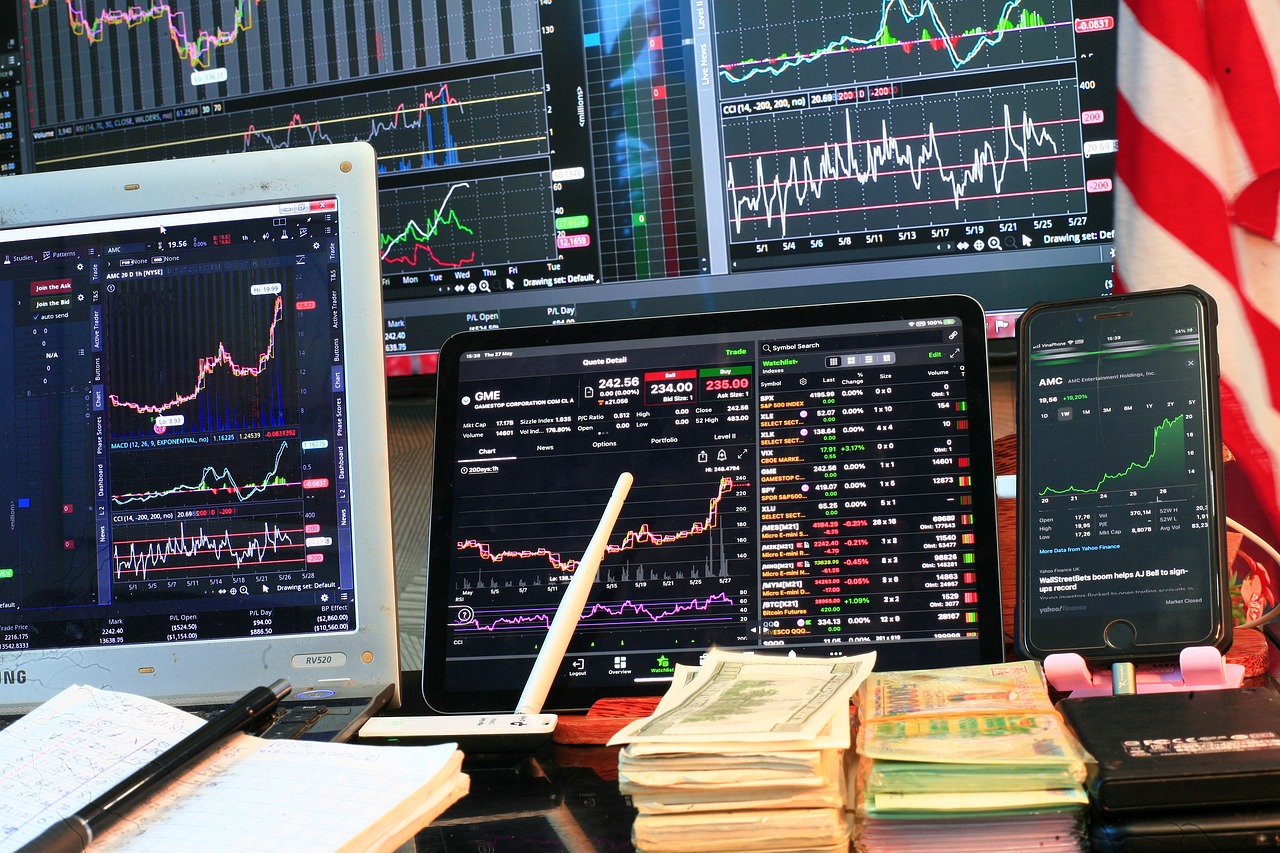
Diversification Strategies
Diversification is not just a buzzword tossed around in trading circles; it's a fundamental strategy that can make or break your trading success. Think of it as spreading your bets across multiple horses in a race rather than putting all your money on one. By diversifying, you’re essentially reducing your risk exposure and increasing your chances of capitalizing on market opportunities. But how do you effectively diversify your portfolio? Let’s dive into some key strategies.
One of the first steps in diversification is understanding the different asset classes available to you. These can range from stocks and bonds to commodities and real estate. Each asset class behaves differently under various market conditions. For instance, while stocks might soar during a booming economy, bonds often perform better during downturns. By including a mix of these asset classes in your portfolio, you can cushion your investments against market volatility.
Another effective strategy is to diversify within asset classes. For example, if you’re investing in stocks, consider including companies from various sectors such as technology, healthcare, and consumer goods. This way, even if one sector takes a hit, others might still thrive, balancing your overall portfolio performance. Here’s a simple table to illustrate how you can diversify within stocks:
| Sector | Example Companies | Potential Risks |
|---|---|---|
| Technology | Apple, Microsoft | Market volatility, competition |
| Healthcare | Pfizer, Johnson & Johnson | Regulatory changes, patent expirations |
| Consumer Goods | Coca-Cola, Procter & Gamble | Economic downturns, changing consumer preferences |
Moreover, geographical diversification is another strategy worth considering. Investing in international markets can provide exposure to different economic conditions and growth opportunities. While it may seem daunting to navigate foreign markets, many exchange-traded funds (ETFs) and mutual funds can help simplify the process. These funds allow you to invest in a basket of international stocks without needing to pick individual companies.
Finally, remember that diversification is not a one-time task; it requires ongoing education and adjustment. As market conditions change, so too should your diversification strategy. Regularly reviewing your portfolio and staying informed about global economic trends can help you make informed decisions about where to allocate your resources.
In conclusion, diversification is a powerful tool in risk management that every trader should embrace. By spreading your investments across various asset classes, sectors, and geographical regions, you can significantly reduce your risk while enhancing your potential for returns. So, take the time to educate yourself on diversification strategies and watch your trading success grow!
- What is diversification in trading? Diversification is the practice of spreading investments across various financial instruments, asset classes, or markets to reduce risk.
- How does diversification minimize risk? By investing in different assets, the negative performance of one investment can be offset by the positive performance of another, thereby stabilizing overall returns.
- Can I over-diversify my portfolio? Yes, over-diversification can lead to diminishing returns and make it difficult to manage your investments effectively.
- What is the best way to diversify? A balanced approach that includes a mix of asset classes, sectors, and geographical investments is generally recommended.

Setting Stop-Loss Orders
Setting stop-loss orders is a fundamental aspect of successful trading that every trader should master. Think of a stop-loss order as a safety net, designed to catch you before you fall too far into the abyss of financial loss. It’s like having a parachute when jumping out of a plane; it won’t prevent you from jumping, but it will ensure that your landing is a lot softer. By specifying a price at which your asset will be sold automatically, you can protect your investments from unexpected market downturns. This strategy is not just about limiting losses; it's also about maintaining emotional control.
Many traders underestimate the importance of stop-loss orders, often believing they can manually exit a position at the right moment. However, the reality is that emotions can cloud judgment, especially in volatile markets. A well-placed stop-loss order can help you avoid the panic selling that often leads to greater losses. For instance, if you purchase a stock at $100 and set a stop-loss order at $90, you’ve effectively decided that you’re willing to risk $10. If the stock price plummets to $90, the order triggers, selling your shares and preventing further losses.
Moreover, understanding how to effectively set these orders can make a significant difference in your trading success. Here are some key points to consider:
- Market Conditions: Always assess the current market conditions before setting a stop-loss. In highly volatile markets, you might want to set your stop-loss further away from the current price to avoid being triggered by normal price fluctuations.
- Asset Type: Different assets have different volatility levels. Stocks may require tighter stop-losses compared to commodities or cryptocurrencies, which can experience wild price swings.
- Position Size: Your position size should influence your stop-loss placement. A larger position might warrant a wider stop-loss to avoid premature selling.
In addition to these considerations, it’s crucial to regularly review and adjust your stop-loss orders as market conditions change. This practice ensures that your risk management strategy remains aligned with your trading goals and market realities. A static stop-loss can become ineffective if the market shifts significantly.
To illustrate the effectiveness of stop-loss orders, let’s look at a simple table comparing two trading scenarios:
| Scenario | With Stop-Loss | Without Stop-Loss |
|---|---|---|
| Initial Investment | $1,000 | $1,000 |
| Market Downturn | Sold at $900 | Held until $500 |
| Final Outcome | Loss of $100 | Loss of $500 |
As demonstrated, the trader who set a stop-loss was able to minimize their loss significantly compared to the trader who held onto their position without a safety net. This example highlights the importance of having a clear exit strategy in place.
In conclusion, setting stop-loss orders is not merely a precaution; it's an essential part of a disciplined trading strategy. By integrating stop-loss orders into your trading plan, you can protect your capital, reduce emotional stress, and ultimately enhance your chances of long-term success in the markets.
Q: What is a stop-loss order?
A: A stop-loss order is a predetermined price at which a trader instructs their broker to sell an asset in order to limit potential losses.
Q: How do I determine where to set my stop-loss?
A: Factors such as market volatility, asset type, and your overall trading strategy should influence your stop-loss placement. It's often wise to set it a certain percentage away from your entry point based on historical price movements.
Q: Can I adjust my stop-loss order?
A: Yes, you can adjust your stop-loss order as market conditions change. Regularly reviewing it is a good practice to ensure it aligns with your trading strategy.
Q: What happens if the price hits my stop-loss?
A: When the price reaches your stop-loss level, the order triggers an automatic sale of your asset at the next available price, helping to limit your losses.
Frequently Asked Questions
- Why is continuous education important for traders?
Continuous education is crucial for traders because it helps them stay updated with market trends, economic indicators, and trading strategies. In a fast-paced environment like trading, knowledge is power! The more you learn, the better equipped you are to make informed decisions and adapt to changing market conditions.
- What are market dynamics and why should traders understand them?
Market dynamics refer to the factors that influence the behavior of financial markets, including trends, supply and demand, and economic indicators. Understanding these dynamics allows traders to anticipate market movements and make smarter trading choices. Think of it as reading the mood of the market—if you know what's happening, you're more likely to succeed!
- How can I develop effective trading strategies?
Developing effective trading strategies involves ongoing education and practice. By learning different techniques, analyzing past trades, and staying informed about market conditions, you can create strategies that fit your trading style. Remember, a solid strategy is like a roadmap; it guides you through the twists and turns of the market!
- What is technical analysis and why is it important?
Technical analysis is the study of price movements and chart patterns to forecast future price behavior. It's important because it helps traders identify potential entry and exit points, making it easier to capitalize on market opportunities. Mastering technical analysis is like having a crystal ball for trading!
- What role does fundamental analysis play in trading?
Fundamental analysis focuses on evaluating economic factors that affect the markets, such as company earnings, economic growth, and interest rates. This type of analysis is essential for traders looking to understand the underlying value of assets. It's like getting a behind-the-scenes look at what drives market movements!
- How can I manage risk effectively in trading?
Effective risk management involves using strategies like diversification and setting stop-loss orders to minimize potential losses. By spreading your investments across different assets and limiting your exposure, you can protect your capital and reduce the impact of market volatility. Think of it as wearing a seatbelt in a car—it's all about keeping you safe!
- What are diversification strategies in trading?
Diversification strategies involve spreading investments across various assets to reduce risk. This way, if one investment doesn't perform well, others may offset the loss. It's like not putting all your eggs in one basket—if one basket drops, you still have others to rely on!
- Why should I set stop-loss orders?
Setting stop-loss orders is vital for protecting your investments from significant losses. A stop-loss order automatically sells your asset when it reaches a certain price, helping you to preserve capital and avoid emotional decision-making. It's like having a safety net while you navigate the trading world!


